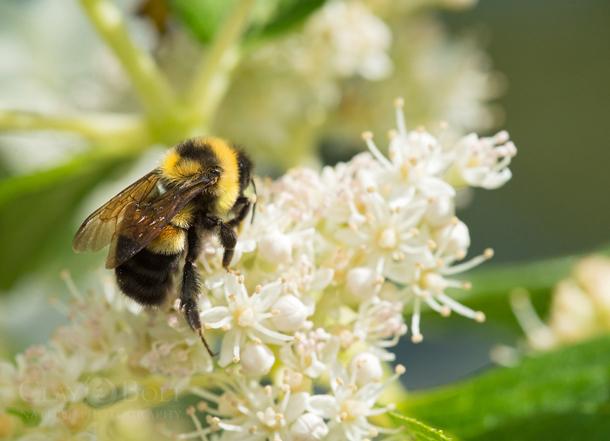Here’s how to convert your lawn into a bee pollinator habitat
The state of Minnesota is one year into a new program to help support the rusty patched bumblebee, along with other native pollinators.
With spring in the air, it’s a great time to get started planting flowers to support native pollinators. In Minnesota, residents can get help with this through a program that pays homeowners to convert their lawns to pollinator-friendly habitats.
Pollinator populations are in sharp decline everywhere. Scientists say as many as 40% of insects may be facing extinction in the coming decades, including critical pollinator species such as bees, which are responsible for pollinating the crops that provide one in three bites of food we eat.
Related: Why dying bees may cause a public health problem
The Minnesota program provides funding to homeowners to convert lawn or managed turf into something more beneficial to pollinators, explains Sarah Foltz Jordan, a senior pollinator conservation specialist with the Xerces Society.
The program offers a variety of options, Foltz Jordan says, including simple things such as planting clovers and other legumes within a lawn. But she expects the majority of the funding will go toward converting turf to native plantings that provide blooms for pollinators through the fall and support a wide variety of species.
A total of $900,000 was allocated for the program, and individual homeowners can receive up to $350 to help with the conversion. Priority is given to land in a zone of the rusty patched bumblebee, a species the program was designed to support.
The rusty patched bumblebee was listed as federally endangered in 2017 and has declined by about 87%, Foltz Jordan says.
“It’s sort of a flagship species,” she explains. “It’s still hanging on. In the metro regions of Minnesota and Madison, Wisconsin, there are a few strongholds, although they could certainly be stronger. What we’re looking at here is trying to boost the population of this bee by connecting different places where we know it still occurs, providing some connectivity by increasing habitat in those corridors and bringing up the number of flowers across its range.”
New plantings will benefit many other species, too, including the monarch butterfly, which has gotten a lot of attention because of its beauty and popularity.
Related: Solving the monarch butterfly’s decline will take more than just milkweed
“Monarchs…are one of our more charismatic, well-studied insects,” Foltz Jordan says. “We’ve seen 60 to 90% declines in population size, depending on what years you’re comparing, in our Eastern population. That’s sort of the tip of the iceberg. There are a lot of species that are not as well on our radar and it’s really hard to say how they’re doing.”
Insect and pollinator decline is a “multi-faceted problem,” Foltz Jordan continues. “They’re being hit in a number of ways. There’s been dramatic habitat loss, increases in pesticides, including a lot of pollinator-lethal pesticides and also increased disease spread. … As we think about increasing habitat for pollinators in our yards and bringing in more flowers, my hope is that we’re also thinking about pesticide reductions.”
Food systems are dependent on pollinators and much of the focus on saving them from extinction has been on their economic significance, “but I don’t think we give pollinators as much credit as we should for their role in preserving and sustaining our natural ecosystems,” says Foltz Jordan.
“About 85% of our wild flowering plants are pollinator-dependent, and pollinators are also kind of keystone species in other ways,” she explains. “They’re providing pollination services that enable the fruit and seed set of a lot of plants, but they are also being consumed by birds and small mammals and supporting these diverse food chains and ecosystems in that way, as well.”
Native flowers are important because many pollinators, including butterflies, moths and bees, rely on particular species for nutrition and will select pollen to feed their babies only from certain plants.
“I think it’s a little confusing for people sometimes because butterflies and bees will visit non-native plants,” Foltz Jordan explains. “So it can look like…these plants are doing a great job at attracting bees and butterflies, but just because they’re visiting doesn’t mean that the nutrition that they’re getting is adequate or preferred.”
Foltz Jordan says she used to have a lot of cut flowers and non-native ornamentals in her garden, too. But now that she has converted it to mostly native flowering plants, it is “just astounding to witness the change in the types of insects that I’m seeing and the abundance of insects that I’m seeing — just because of the plants being better suited to meet their needs.”
Many of these insects also have nesting and overwintering needs, Foltz Jordan reminds us, so it’s a good idea to supply them with some basic shelter. She advocates leaving in place things like dead stems in wildflower gardens, branches, brush piles, leaf litter, rock piles and rock walls for the insects’ use.
This article is based on an interview by Bobby Bascomb that aired on Living on Earth from PRX.
